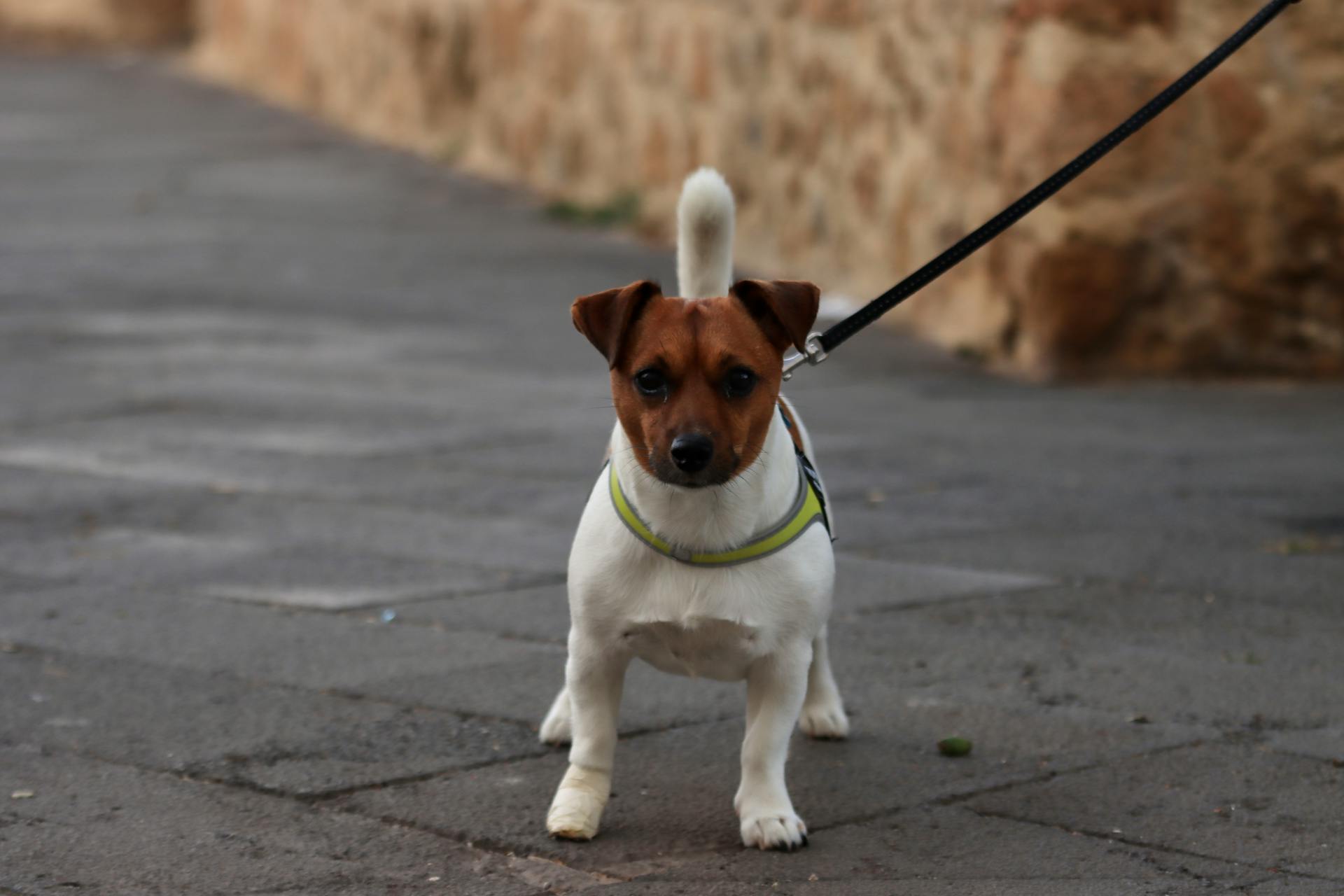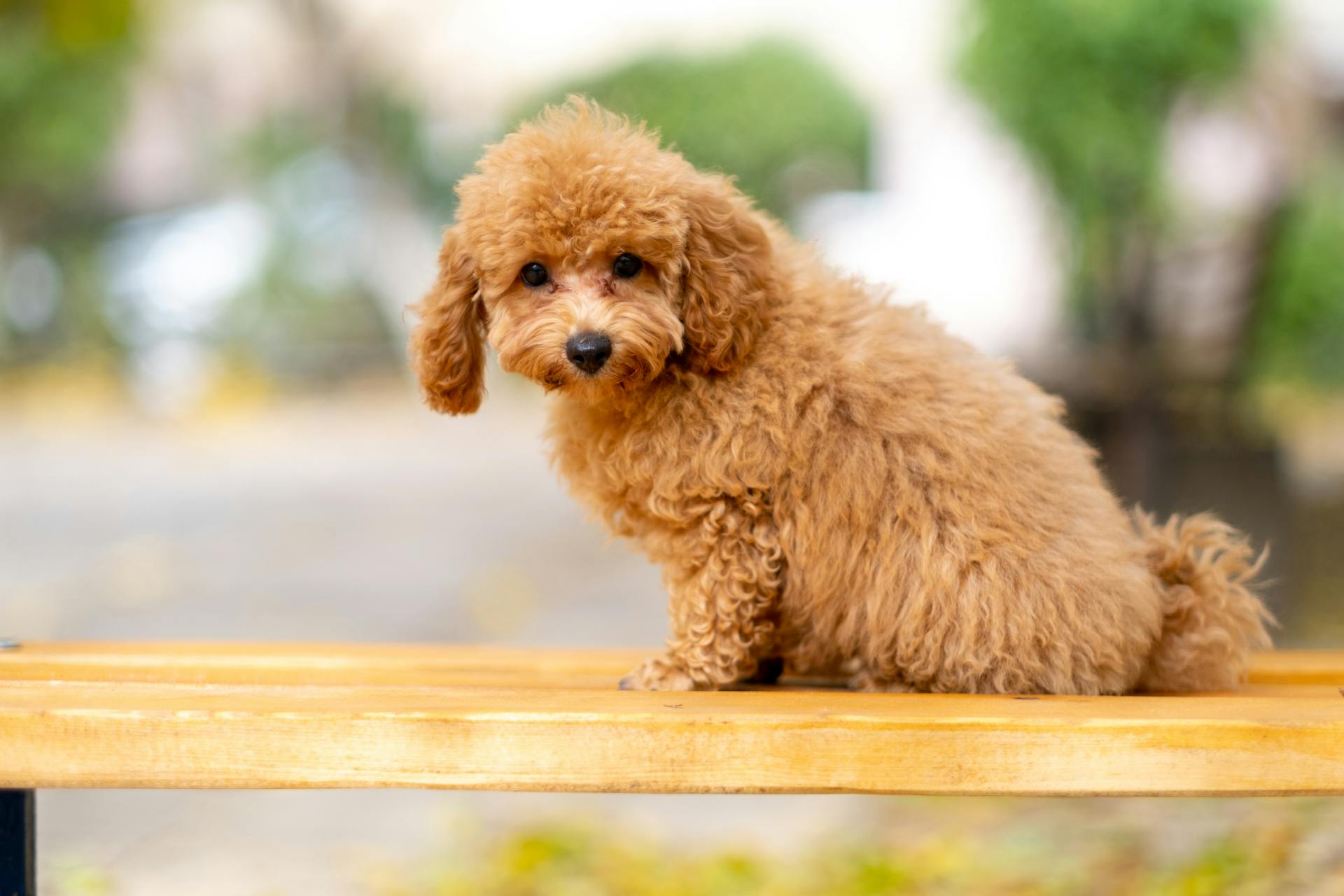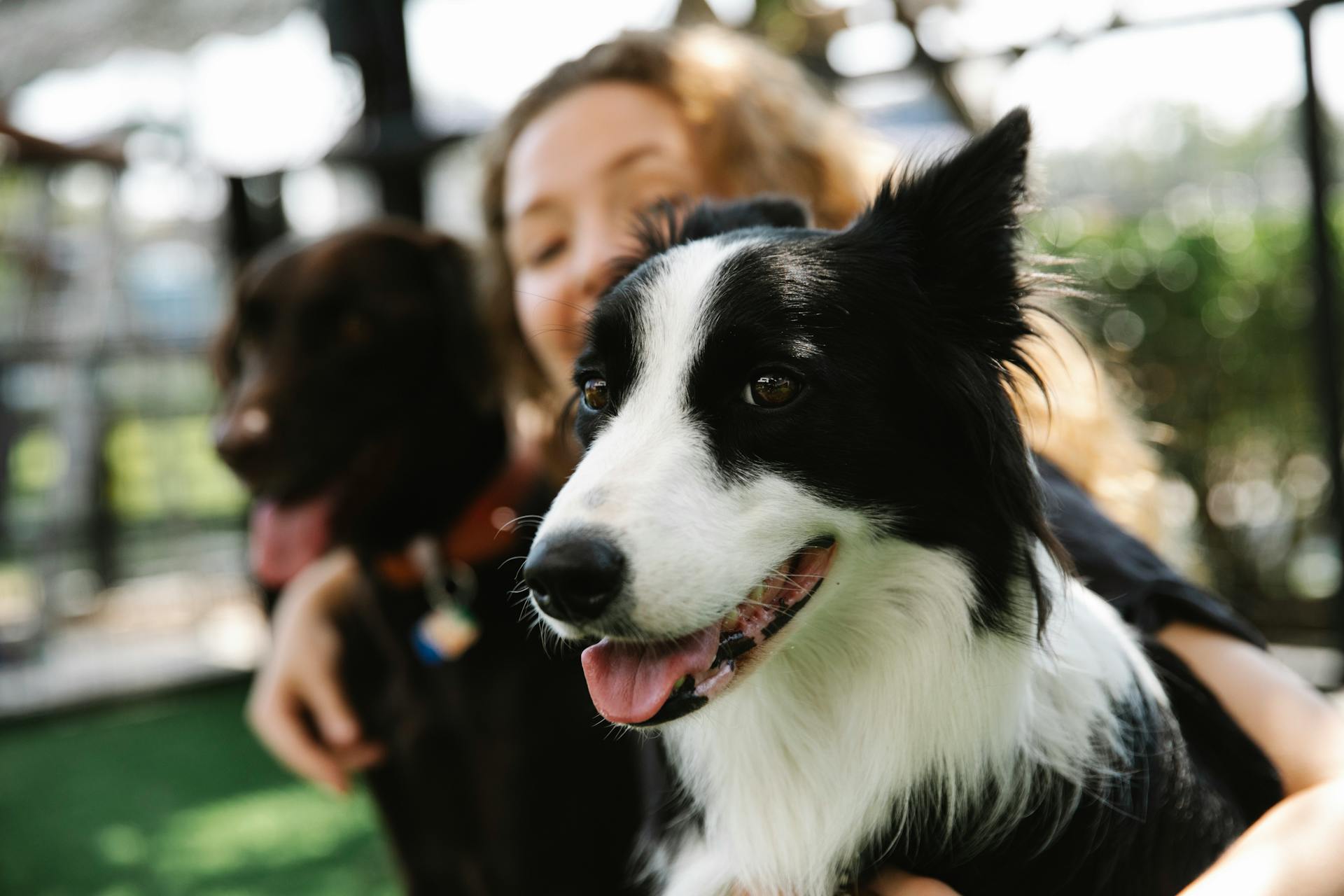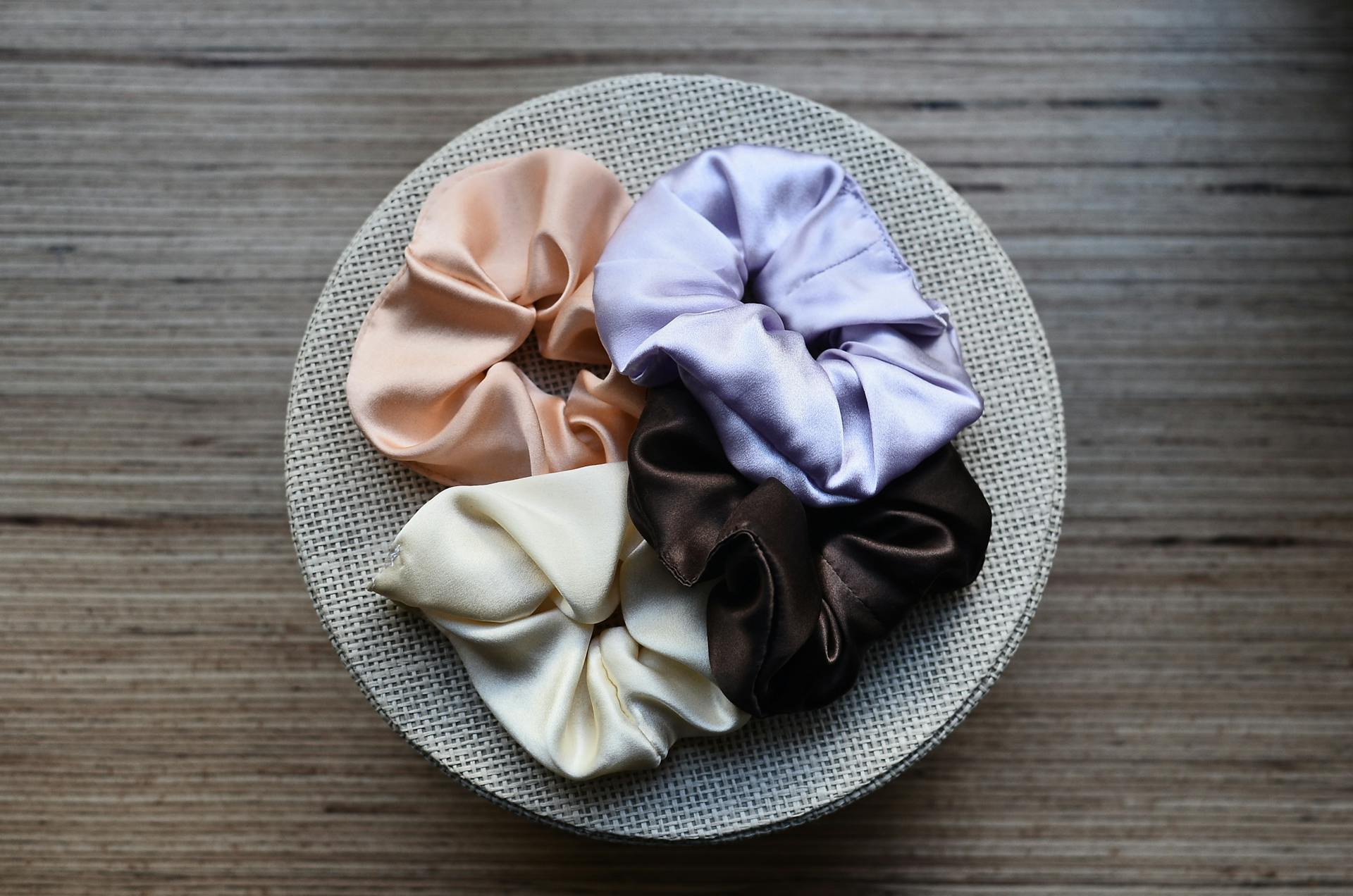
The Silky Terrier is a breed that's often considered hypoallergenic, but what exactly does that mean? It means that they produce fewer allergens than other breeds, making them a great option for people with allergies.
They have a single layer coat that sheds very little, which reduces the amount of dander and other allergens released into the air.
Their low-shedding coat requires regular grooming to prevent matting and tangling, but it's a small price to pay for the benefits of owning a Silky Terrier.
These dogs are small, typically weighing between 8-11 pounds, and standing about 9-10 inches tall at the shoulder.
What is a Silky Terrier
The Silky Terrier is a small to medium-sized dog breed that weighs between 8-11 pounds and stands about 9-10 inches tall. They have a silky, fine coat that requires regular grooming.
Their origin dates back to the 19th century in Australia, where they were bred as a working dog to catch rodents and other small animals.
Hypoallergenic Qualities
No dog is 100% allergen-free, but some breeds are specifically bred to produce fewer allergens in their hair.
Even hypoallergenic dogs still contain allergens in their skin, saliva, and urine, which can trigger an allergic response.
Hypoallergenic dogs are bred to produce fewer allergens in their hair, making them a good fit for people with allergies.
Living with a Silky Terrier
Living with a Silky Terrier requires some education, as they can be mistaken for other breeds like the Yorkshire Terrier or Australian Terrier.
The Silky Terrier's coat is a key distinguishing feature, being straight, single, glossy, and silky in texture, unlike the double-coated Australian Terrier.
Grooming is relatively easy if the coat is properly textured, as it's similar to human hair.
The Silky Terrier's coat is also cool to the touch and has a unique feel, making it a standout feature of the breed.
Establishing a Presence
The Silky Terrier can be a bit misunderstood, even among dog enthusiasts. "People would say, 'Oh, my goodness, a Yorkie!' And we'd say, 'No,' and try to point out the differences."
The Silky's unique appearance can be attributed to its mix of Australian Terrier and Yorkshire Terrier ancestry, except for its distinctive coat. The Silky's coat should be straight, single, glossy, and silky in texture, unlike the double-coated Australian Terrier.
Grooming a Silky is relatively easy, thanks to its coat texture. "It's so much like human hair", says Florence Males, a former breeder and handler of Silkys.
The Silky's coat is one of its most striking features, with a rich, liquid silver color and subtle black, brown, and golden undertones.
Living with a Dog
Living with a Silky Terrier requires some special considerations, especially if you're a first-time dog owner. There are a few things pet parents need to be aware of before purchasing or adopting a hypoallergenic dog, like the Silky Terrier.
Silky Terriers are small dogs, but they still need regular grooming to prevent matting and tangling of their long coats.
You'll want to establish a regular grooming routine to keep your Silky Terrier's coat looking its best.
Other Hypoallergenic Dogs
Some other breeds that are often considered hypoallergenic are the Maltese and the Bichon Frise.
These breeds are known for producing fewer allergens in their hair, which can make them a good fit for people with allergies.
However, it's essential to remember that no dog is 100% allergen-free, and even hypoallergenic breeds can trigger an allergic response in some people.
Soft Coated Wheaten Terrier
The Soft Coated Wheaten Terrier is a medium-sized Irish breed. This dog has a silky coat that’s incredibly soft to the touch and doesn’t shed a lot. They maintain a high energy level throughout their life. Wheatens need ample exercise and stimulation to be on their best behavior.
Curious to learn more? Check out: Soft Coated Cairn Terrier
Hypoallergenic Dogs
Hypoallergenic dogs are specifically bred to produce fewer allergens in their hair, making them a good fit for some people with allergies. However, it's essential to note that no dog is 100% allergen-free.
Despite their lower allergen production, hypoallergenic dogs still contain allergens in their skin, saliva, and urine. This can trigger an allergic response such as coughing, itching, or wheezing.
Before bringing a hypoallergenic dog into your home, there are a few things to be aware of. Pet parents need to consider the potential risks and take necessary precautions to minimize their impact.
General Information
The Silky Terrier is a small dog breed that originated in Australia, weighing between 8-11 pounds. They have a long, silky coat that requires regular grooming.
Their hypoallergenic properties make them a great choice for people with allergies, as they shed very little and produce fewer dander particles than other breeds.
Early Days
The Silky's origins are a bit more complicated than you might think. The general explanation is that they're a result of planned matings between the Australian Terrier and the Yorkshire Terrier, but that might not be the whole story.
The Australian Terrier and the Silky terrier both have a common ancestor in a dog called the "rough coated terrier" from Tasmania. This dog had a rough, textured coat of blue and tan or sandy color.
The rough coated terrier was a type of dog, rather than a specific breed, and it's believed to have been bred with other terriers in the late 1800s. These other terriers included the Yorkshire and the Skye, which were imported from Great Britain.
A different take: Flat-coated Retriever
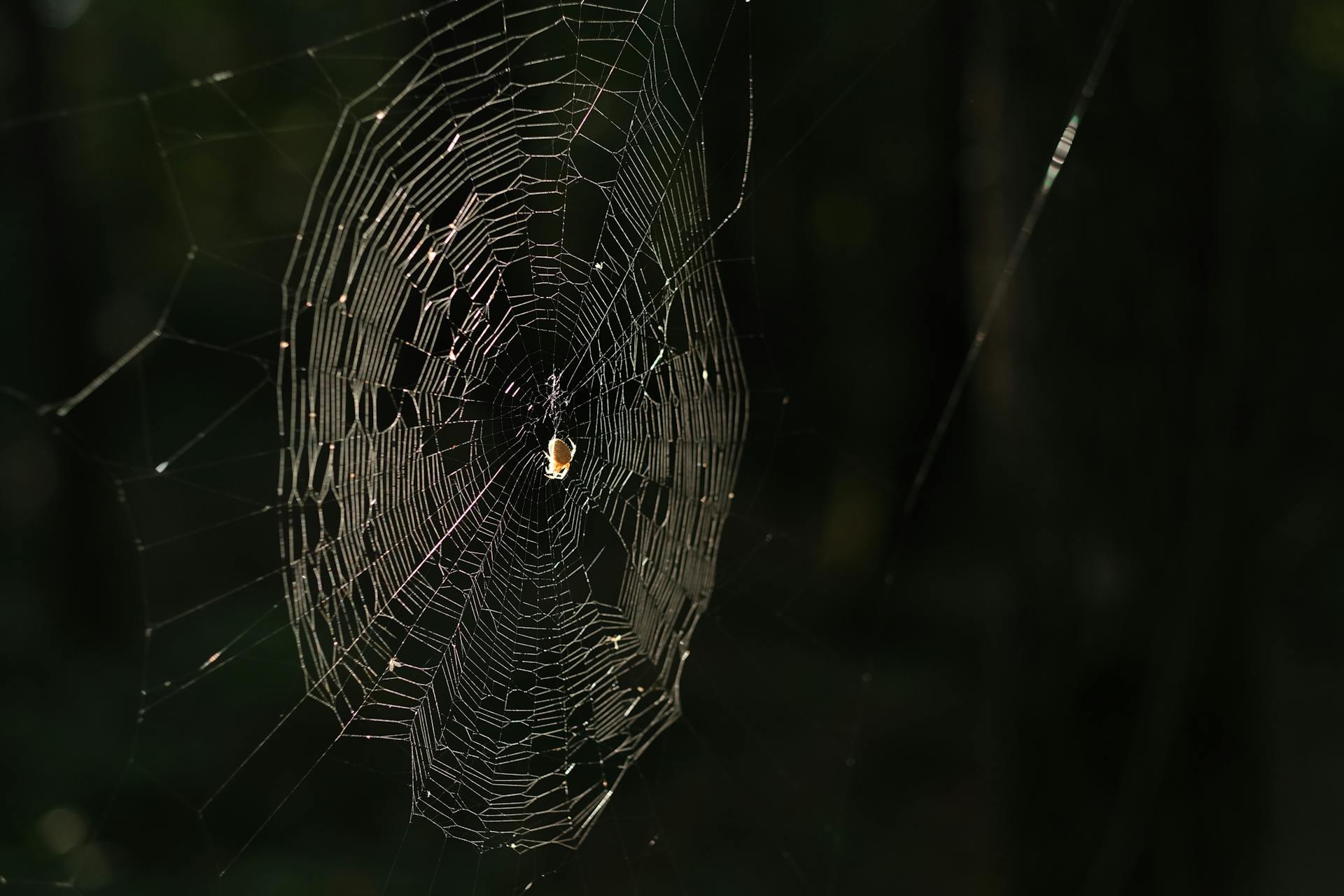
The Kennel Club of New South Wales was one of the first to differentiate between types of this foundation terrier. They offered classes for "Australian Rough Coated Terriers" and "Silky Haired Terriers" as early as 1898.
By 1903, the club had adopted the first standard for the Silky-haired Terrier. This was a significant step towards establishing the Silky's own identity.
You might like: Shih Tzu First Haircut
Today and Tomorrow
The Silky breed has developed nicely over the years. In the 1970s, the breed was still in its early stages, with Males mentioning that his first litter had a mix of Silky, Yorkie, and Aussie types.
The breed's introduction to the fancy was met with skepticism, with people laughing and smirking at the idea of a Silky breed. Lehnig and Males were told they'd never get the breed to come true.
Despite the doubts, the Silky breed has managed to carve out its own niche and avoid the trend of mini-sized breeds that are often carried in purses. In 2021, the breed ranked 116 out of 197 in AKC registration figures.
Silkys are known for being active and energetic, making them a poor fit for being carried around. Males' sister does put her Silky in a carrier on her bicycle, but the dog is always jumping around.
Sources
- https://www.dogbreedslist.info/all-dog-breeds/australian-silky-terrier.html
- https://www.goodhousekeeping.com/life/pets/g4503/dogs-that-dont-shed/
- https://www.petmd.com/dog/general-health/hypoallergenic-dogs
- https://www.akc.org/dog-breeds/silky-terrier/
- https://www.akc.org/expert-advice/dog-breeds/silky-terrier-history-sweet-feisty-australian-ratting-dog/
Featured Images: pexels.com
